I remember being a child and having rice pudding every day after dinner. Up to this day, it remains one of my favorite childhood memories. Even now, after many years, I look forward to preparing this delightful treat.
However, when you grow up you learn that there’s not always time for a little treat after dinner…or even dinner! You get caught up in work, your kids need help with their homework and the rice pudding remains untouched. Due to that, an important question often comes to my mind – how long does it last in the fridge?
With this comprehensive guide, I wanted to help you learn all about the shelf life of rice pudding, along with tips for safe storage and how to spot if it has passed its prime.
Its shelf life
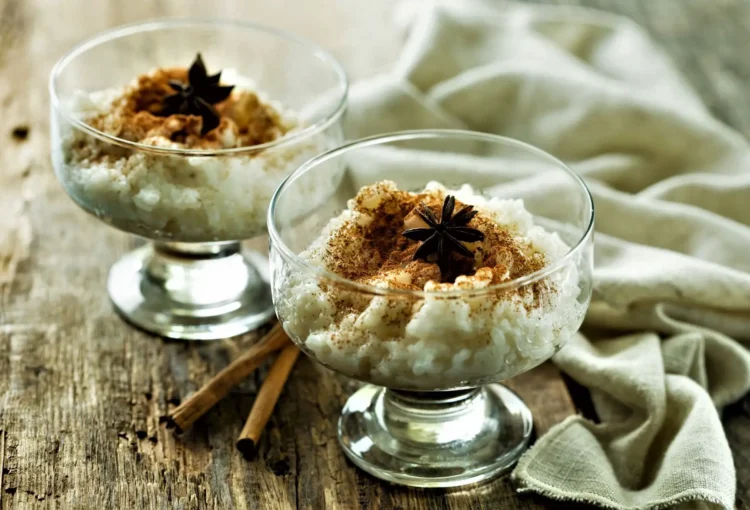
Source: carmelapop.com
Rice pudding’s longevity hinges on various factors, including the ingredients that were used, preparation, and storage conditions. Typically, when refrigerated promptly and correctly, homemade rice pudding can last between 4 to 6 days.
However, the store-bought one or those with preservatives can last a bit longer, usually about 7 days after opening.
What would be its proper storage?
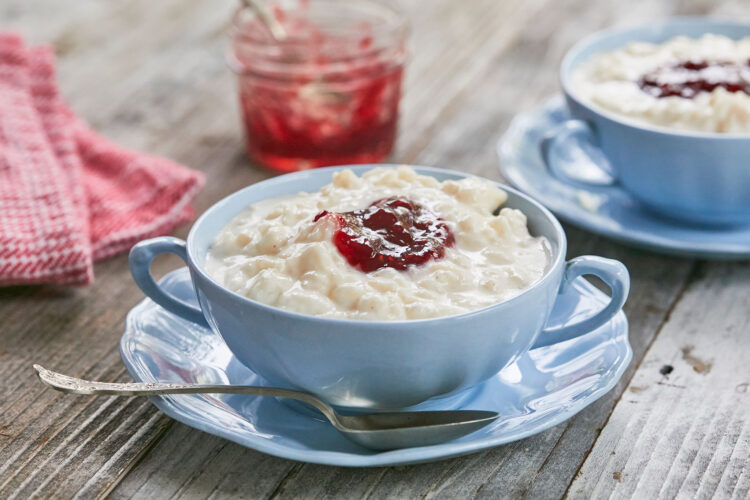
Source: biggerbolderbaking.com
Proper storage of the rice pudding from the beginning is very important. After cooking it, allow it to cool to room temperature before transferring it to an airtight container. Store the container in the refrigerator, ensuring it is tightly sealed to prevent any moisture or odors from affecting it.
The refrigerator’s temperature should be set to 40°F (4°C) or below to maintain the freshness of the rice pudding. Always refrigerate your dessert within 2 hours of cooking to minimize the risk of bacterial growth.
What are the signs of spoilage?
Spoiled rice pudding is not a pleasant experience, trust me. It can be unpleasant and may pose health risks if consumed. If you are unfamiliar with its taste, you have been very lucky.
One of the first signs of spoilage is changes in appearance. Discoloration can occur, causing the pudding to take on an abnormal or off-color hue. Instead of its usual appetizing appearance, the spoiled one may have visible mold growth.
Texture alterations are another noticeable sign of spoilage. Normally, rice pudding has a smooth and creamy texture. However, when it spoils, the texture may become excessively watery or develop lumps or chunks.
In addition to visual and textural changes, an off smell or taste is a reliable indicator of spoilage. Spoiled pudding may emit a foul or unpleasant odor that is distinctly different from its usual aroma.
When any of these signs of spoilage are present, it is safest to discard it. Consuming spoiled pudding can lead to foodborne illnesses caused by harmful bacteria or other microorganisms. These illnesses can result in symptoms such as nausea, vomiting, diarrhea, and abdominal discomfort.
To prevent the risk of consuming spoiled pudding, it is advisable to practice proper storage.
Extending Shelf Life – it is possible!
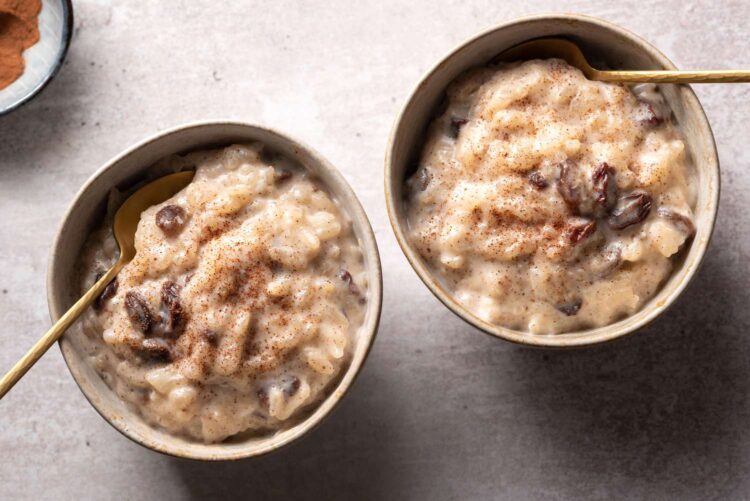
Source: thespruceeats.com
There are several effective methods for extending its shelf life and ensuring its freshness. Freezing the rice pudding is one such method that can greatly prolong its storage time. By carefully preparing and packaging it for freezing, you can enjoy it for up to 3 months.
To freeze the pudding, allow it to cool completely before transferring it to a freezer-safe container. It is advisable to divide it into individual serving portions, which makes it easier to thaw only the desired amount later on.
Make sure to leave some headspace in the container to allow for expansion during freezing. Seal the container tightly and label it with the date of freezing.
Another crucial factor in extending the shelf life of rice pudding is the use of fresh, high-quality ingredients. Starting with fresh milk, high-quality rice, and other necessary ingredients will contribute to a longer-lasting pudding. Avoid using expired or low-quality ingredients, as they may compromise the taste and overall lifespan of the dessert.
Reheating
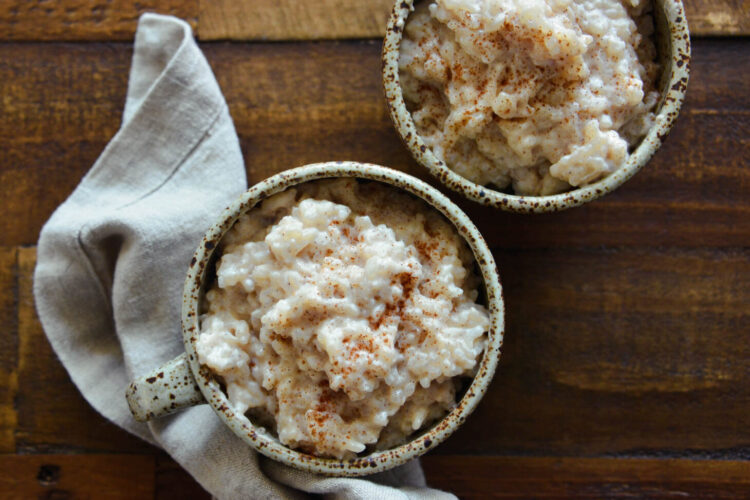
Source: dishnthekitchen.com
One of the most common methods for reheating rice pudding is by using a microwave. Start by transferring the desired portion of the pudding into a microwave-safe bowl. To ensure even heating, it is recommended to stir it occasionally during the reheating process.
Cover the bowl with a microwave-safe lid or microwave-safe plastic wrap to help retain moisture. Set the microwave to a medium power level to avoid overheating or scorching the pudding. Reheat it in short intervals, typically 1-2 minutes at a time, depending on the quantity.
After each interval, remove the bowl from the microwave and stir the pudding to distribute the heat evenly. Check the temperature using a food thermometer, ensuring it reaches a safe minimum internal temperature of 165°F (74°C) throughout.
If you prefer using the stovetop for reheating, transfer the desired amount of rice pudding to a saucepan. Heat it over low to medium heat, stirring occasionally to prevent sticking and ensure even heating.
Continuously monitor the temperature with a food thermometer to ensure it reaches 165°F (74°C) or above. Once the desired temperature is reached, remove the saucepan from the heat.
Alternatively, you can reheat rice pudding in the oven. Preheat the oven to a moderate temperature, around 350°F (175°C). Place the pudding in an oven-safe dish or individual ramekins. Cover the dish or ramekins with aluminum foil to prevent excessive drying.
Bake it for approximately 15-20 minutes or until it reaches an internal temperature of 165°F (74°C). The exact time may vary depending on the quantity and depth of the pudding. Once reheated, remove the dish or ramekins from the oven.
Regardless of the reheating method you choose, ensure that the rice pudding reaches a safe temperature of at least 165°F (74°C) throughout. This temperature is necessary to eliminate any potential bacteria or microorganisms that may have grown during storage. Reheating it thoroughly also helps to restore its creamy texture and flavors.
Food Safety Comes First!
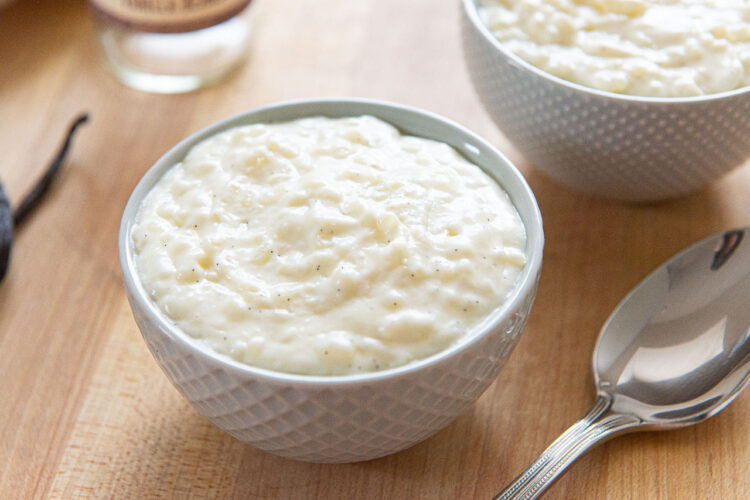
Source: fifteenspatulas.com
Maintaining food safety is crucial. Always remember to wash your hands and use clean utensils during preparation. Store your pudding at safe temperatures and heed the signs of spoilage. When in doubt, remember the age-old advice: “When in doubt, throw it out!”
FAQs
Can rice pudding be stored in the fridge for more than 5 days if it still looks and smells fine?
It is generally not recommended to exceed the recommended storage time even if the pudding appears and smells fine. Bacterial growth may still occur even if there are no apparent signs.
Can it be stored in the fridge for longer if it is vacuum-sealed?
Vacuum-sealing pudding may help extend its shelf life, but it is still advisable to consume it within the recommended storage time.
Can it be stored in the freezer in individual portions?
Yes, storing rice pudding in individual portions in the freezer allows for convenient thawing and reduces waste.
Can it be stored at room temperature during cooler months?
It is still recommended to store the pudding in the refrigerator, even during cooler months, to maintain its quality and prevent spoilage.
How long can it be stored in the freezer?
It can be stored in the freezer for up to 3 months.
To sum up…
We all agree that rice pudding is a wonderful treat, and knowing how to properly store and extend its shelf life can ensure you have a delicious dessert ready when you need it. Always remember that you should keep your homemade treat in the fridge not longer than 4-6 days.
The quality of your pudding begins with good storage habits and keen observation for signs of spoilage. With these insights, you’re well-equipped to enjoy your treat safely and deliciously!






